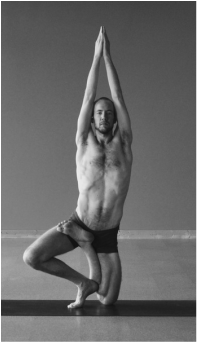|
In my Pranayama (breath and energy control) practice this morning, I noticed my autonomic nervous system. I bumped up against it several times as I tried to inhale or exhale while it didn't think I needed to.
The friction happens most notably at the end of the exhale. The lungs are empty and the most "natural" thing to do is inhale to fill the lungs. The autonomic nervous system tells us "breathe in." So we usually do. During Pranayama practice, as I hold my lungs empty or inhale very slowly, the friction with my autonomic nervous system is palpable. It wants me to inhale quickly, but I consciously inhale slowly or not at all. The second place where friction happens is when my blood has enough oxygen. In this state, my autonomic nervous system says, "No need to breathe so much. Either exhale or be still." During Pranayama practice I am sometimes in this physiological state only midway through the inhale and I try to complete the inhale. It is very difficult, like my muscles and brain shut down, preventing me from inhaling further. I have yet to navigate this obstacle, but I predict that at some point my autonomic nervous system will settle and I will be able to inhale at will. When I arrive to this level of control, I will need to be incredibly careful about the state of my physiology, my heart rate and blood oxygen content because I will be consciously overriding an autonomic function designed to keep my body and brain supplied with the correct amount of oxygen. The amazing thing about controlling the breath over several minutes is the realization that breathing is usually so subconscious. Even if we control the breath for a moment, we soon release it and let the autonomic nervous system monitor and govern it. We never get too far from the self-regulated balance of oxygen in the blood. I think I may be approaching the true power of Pranayama practice: the awareness and even control of the autonomic nervous system. It is both exciting and frightening. I have to be very careful.
0 Comments
I often wonder about the purpose of my life.
How will I know if I am fulfilling my purpose? How will I know if I have a purpose? What might that purpose be? I ask myself a simple question: "What do I think needs to be different?" From there things become simpler and clearer. I take the steps required to bring about change, usually by offering something new or ceasing to do something I have been doing mindlessly. This is a straightforward way to honor ourselves and our unique visions, and to slowly change the world. I have been asked several times in the past few months why I don't say Namaste at the end of class and also why I don't use Sanskrit terms or names for postures. The answer is, mostly, clarity.
SANSKRIT I don't speak Sanskrit, and none of the students that I've come across speak Sanskrit either. Most of us in the US speak English, so it feels natural to me to speak English when I teach. There is somewhat of a tradition in yoga to use the Sanskrit names of postures. At its best, it offers a sacredness and gravity to the practice, at its worst it creates elitism and confusion. I have never been one for following traditions out of deference. I prefer to test each lesson and practice in the context of modern civilization and my own life. I find that yoga is easier to understand, practice and teach when I use common language. It allows me to relate to the practices instead of revere them, and as a teacher I encourage my students to do the same. We practice yoga because it benefits us, not because it is traditional. NAMASTE Namaste (literally translated as "I bow to you") is a respectful greeting that can be interpreted as anything from "salutations" to recognition of the divine in another person. It is a Sanskrit word, and my dislike for its confusion is the same as above. But the cultural and spiritual implications of the word also trouble me and keep me from using it. I am not Hindu. The meaning that we give namaste in yoga is a distinctly Hindu one, something along the lines of "I bow to the divine in you" or "I see the same divine light in you as I see in myself." While I think these are beautiful and powerful phrases, they assume a certain level of Hinduism that I don't take lightly. THE DIVINE The path of yoga gradually reveals to us the underlying nature of reality, in which the "Divine" is universally present in all people, beings and things. But even that explanation takes on Hindu terminology and a Hindu relationship to God. Personally, I have not progressed far enough on the path of yoga to make this statement unequivocally and with integrity. I can understand it in theory, but that is a far cry from the first-hand experience and understanding I prefer before adopting language and teaching into my life. RESPECT The idea behind Namaste is a beautiful one, at least the way it has been generally appropriated in western yoga. A recognition of effort and goodness in others. I prefer to say these things clearly, concisely and in my own language. I gladly offer respect, gratitude, honor and joy when I feel them. I simply use those words. |
This journal honors my ongoing experience with the practice, study and teaching of yoga.
My FavoritesPopular Posts1) Sridaiva Yoga: Good Intention But Imbalanced
2) Understanding Chair Posture 2) Why I Don't Use Sanskrit or Say Namaste 3) The Meaningless Drudgery of Physical Yoga 5) Beyond Bikram: Why This Is a Great Time For Ghosh Yoga Categories
All
Archives
November 2017
|


 RSS Feed
RSS Feed